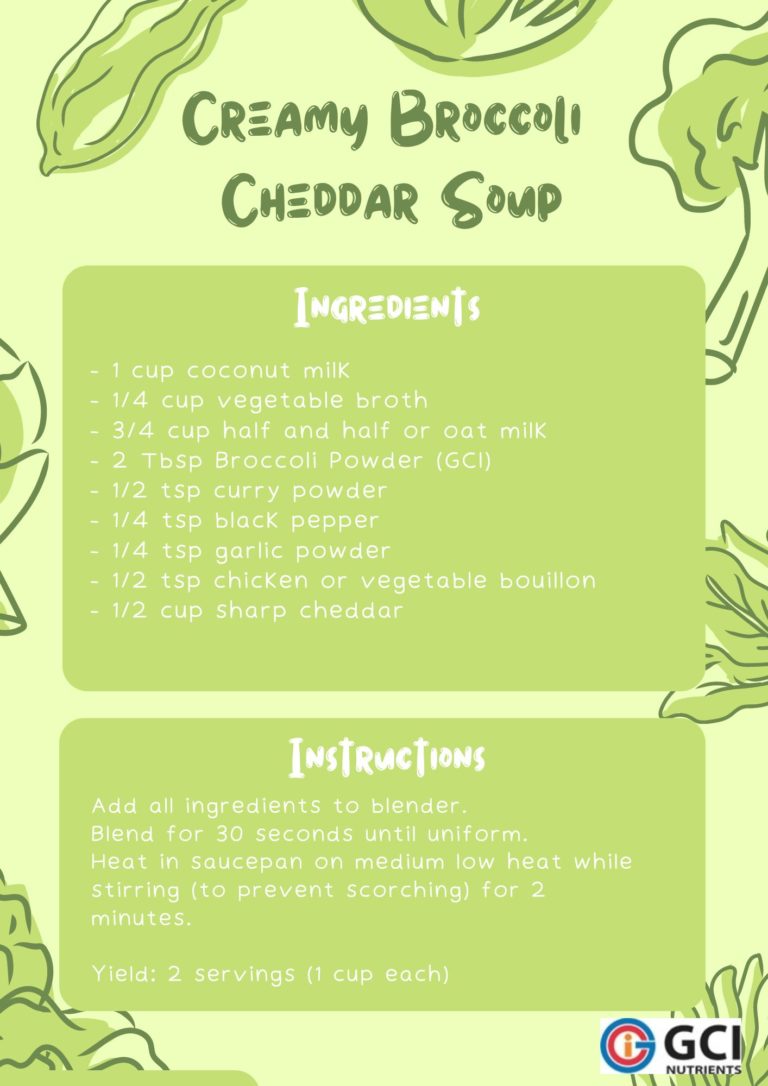November 2022
Creamy Broccoli Cheddar Soup

650-697-4700
The Amino Acid Merry-go-round – Part 2
Hello Friends:
It’s understood and obvious that protein is needed to build muscle and new body tissues. But protein without an inadequate level of the key branched-chain essential amino acid and anabolic trigger leucine, will not be effective in building healthy muscle mass.
Parenthetically, aside from muscle, bones require strong muscles for the proper forces to stimulate the mineralization of their structure.
Simply put: Weak muscles eventually mean weak bones.
This is part of the sarcopenia syndrome usually more frequent in less active older age. However, it need not be the case that it is inevitable.
In this respect, I have a slight difference of opinion in suggesting its inevitability in the opening sentence of this quote.
Important to establish, however, building muscle depends on having sufficient insulin in circulation at the time of amino acid presence, however, the insulin is stimulated when leucine and glucose are present at the same time.
Leucine alone raises glucagon which raises blood sugar, but leucine in the presence of glucose raises and stimulates insulin secretion from the pancreas which in turn, ironically lowers the blood sugar by virtue of activating numerous metabolic and muscle-building processes that “gobble up” blood glucose as reviewed in the following abstract.
“Leucine, when ingested with glucose, synergistically stimulates insulin secretion and lowers blood glucose”PMID: Kalogeropoulou; 19013300 DOI:
So what does this mean in terms of my diet? Does it mean I have to have sugar when I consume protein? No, not necessary, since all carbohydrates will provide the body dietary sugars upon its breakdown in the digestive tract. Fruits of course and even vegetables, like broccoli, contain sugars, so not a problem.
It makes sense if I’m on a regular kind of diet, but what if I am on a keto diet where there is severe carb restriction?
When carbs are restricted, your body switches to using fat and ketones rather than sugar as its main energy source.
Aside from your red blood cells and a small portion of your brain and kidneys, which do require glucose, your cells can use fatty acids or ketones as fuel– I believe not a good idea indefinitely but could be done periodically.
While it is true that glucose is essential for sustaining life your body is actually capable of making glucose for any cells that need it, even if you don’t consume any carbs. This is because your liver can convert amino acids (found in protein), a process called “deamination” and glycerol (found in fatty acids) into glucose. This process is known as gluconeogenesis.
In their 2005 textbook “Dietary Reference Intakes for Energy, Carbohydrate, Fiber, Fat, Fatty Acids, Cholesterol, Protein, and Amino Acids,” the U.S. Food and Nutrition Board of the Institute of Medicine states:
“The lower limit of dietary ( sourced) carbohydrate compatible with life apparently is zero, provided that adequate amounts of protein and fat are consumed.”
Interestingly, there are nine essential amino acids found in protein and two essential fatty acids, but there is no such thing as an “essential” carbohydrate only because, in a “pinch”, your body can make glucose drawing first from your muscles before your fat!
Strange isn’t it? That’s because Nature wants to see your survival before protecting your muscles!
Also, fat is preferred for survival by Nature, because it is more metabolically versatile than our nice-looking muscles!
There is more to discuss regarding leucine that will be in Part 3.

